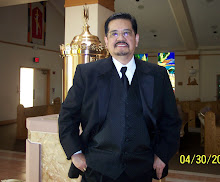I remember one parish priest who held a series of talks and one talk took place in a pub near the U of T. in Toronto. Yes, an Irish pub.
The priest was not even Irish; he was a Filipino-Canadian. But yes, there are many Irish priests in Canada and the U.S.A. In fact, a second cousin's daughter is married to an Irish-Canadian who has a priest for an uncle. And for an Irish, going to a pub (bar) is like going for a walk - it is the most natural thing to do.
I figured, that priest must have many Irish priest friends and that he was attending the University for post graduate studies and that the pub was the best place to hold a talk because it was populated by students from the nearby university whose attendance he probably wanted.
And then I read about "pub talks." One Australian priest in an article says, "It is one thing to discuss key questions among ourselves as Catholics,
it is another to go into the public forum and raise the issues that are
current and important," says Bishop Julian. "Holding these talks in pubs
in the city provides young people with an informal relaxed environment
in which they can engage with the important questions that are currently
being debated in newspapers, on talk back radio and on many television
programs."
 |
| A typical pub talk. |
My mind flashed back to this scenario because at a recent church group meeting I attended, someone admonished the members to avoid posting photos in their social networking sites which show them drinking in the presence of a priest.
According to the individual, others may misconstrue it and think that the priest was drinking.
What's wrong with a priest drinking beer during a ministry fellowship, anyway?
The warning by the group member was a classic case of 'beauty is in the eyes of the beholder," or more like "sin is in the eyes of the sinner."
Vatican II changed the way the Catholic church treated the laity; the laity was made more involved with the Church through the various ministries and apostolates; it became a partner of the Church in spreading the kingdom of God. Corollary to this, the priests became more in touch with their parishioners.
As a Knight of Columbus, I became aware of how the laity should defend its priests. Instead of worrying how others may perceive an ordinary photograph, I would take the positive action of explaining (if need be) what's probably behind the image.
I won't take the high road of snobbery.
Here's another piece on
pub talks. " Archbishop Donald Wuerl stepped onto the stage at the archdiocesan
sponsored Theology on Tap on Oct. 17 to cheers and applause from the
young crowd. "That's the warmest welcome I've ever received in a pub,"
he said. And then added, "That's the first welcome I've ever received in
a pub." -
from Catholic online (http://www.catholic.org/diocese/diocese_story.php?id=21800).

